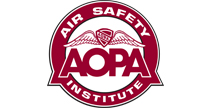Touch-and-go leads to tragic spin for CFI, student
(NYC08FA189)
 By David Kenny
By David Kenny
Flight instructors have to walk a fine line, particularly with late-stage or certificated students. They have to let the student fly the aircraft, preferably without displaying the conspicuous eagerness to seize the controls that can undermine a low-time pilot’s confidence. But the CFI also must be pilot in command. Bearing ultimate responsibility for the safety of the flight means staying alert and watchful even with students who shouldn’t need any help, particularly when there isn’t much margin for error.
Just before noon on May 22, 2008, a Grumman American AA-1C entered an accelerated stall, crashed into a parked trailer, and caught fire immediately after takeoff from Northeast Philadelphia Airport. The flight instructor and student pilot were killed. They had been doing touch-and-goes on Runway 33 as the last tune-up before the student’s private pilot checkride.
Related Links
Mastering Takeoffs and Landings Safety Advisor
Takeoffs and Landings Safety Video Series
Essential Aerodynamics: Stalls, Spins, and Safety online course
Previous circuits had been in left traffic, but two other aircraft had been vectored into a right pattern for the same runway, and a helicopter on its east side was waiting to depart to the west. With the AA-1C on final approach, the tower controller directed the helicopter pilot to hold his position for landing traffic. After the Grumman touched down, the controller advised the helicopter pilot that the airplane would be making a left downwind departure, and cleared him to take off. The Grumman went from “touch” to “go” as the helicopter climbed out, and the tower instructed the airplane to “make right traffic.”
Neither the student nor the CFI acknowledged this instruction, but the tower controller, the helicopter pilot, and a witness preflighting another airplane all saw the Grumman start banking to the right. It was only about 200 feet above the ground, well below the normal altitude for the crosswind turn. The helicopter pilot thought that the turn looked uncoordinated and the rate of climb was slow. The witness on the ground noted the Grumman’s high angle of attack before it began to bank. The bank angle, initially shallow, steepened to 30 degrees before the right wing dropped in an apparent stall and the airplane disappeared. A plume of smoke appeared five seconds later.
A security camera at a warehouse captured the last five seconds of the flight, in which the airplane reversed course in a 90-degree bank before its right wing struck the trailer. The fire almost completely consumed the wreckage, but investigators were able to confirm continuity of the flight controls and compression and valve continuity in the three cylinders that weren’t destroyed by impact. The damage to the propeller suggested that it had been turning when it struck.
The CFI had more than 1,600 hours of flight experience, half of it in AA-1Cs. The student had logged 87 hours, all in that same model. Having been signed off for his checkride, he had certainly flown solo in the traffic pattern, the practice area, and cross-country. At that stage of training, his instructor wouldn’t have expected to do much more than sit back and offer pointers. When the student made a critical error at 200 agl, he wasn’t poised to grab the flight controls in time to avert disaster.
If the student—perhaps task-saturated from trying to fine-tune his landings in the busy airport environment—reacted to ATC’s unexpected instruction to change direction by starting to bank prematurely, unintentionally adding more back pressure, the CFI had little time to recognize and prevent the impending stall. And once it developed, a stall at 200 agl might well have been unrecoverable—especially with one wing low and the airplane uncoordinated.
Successful students earn their instructors’ confidence. It’s up to the instructor not to let confidence devolve into complacency.